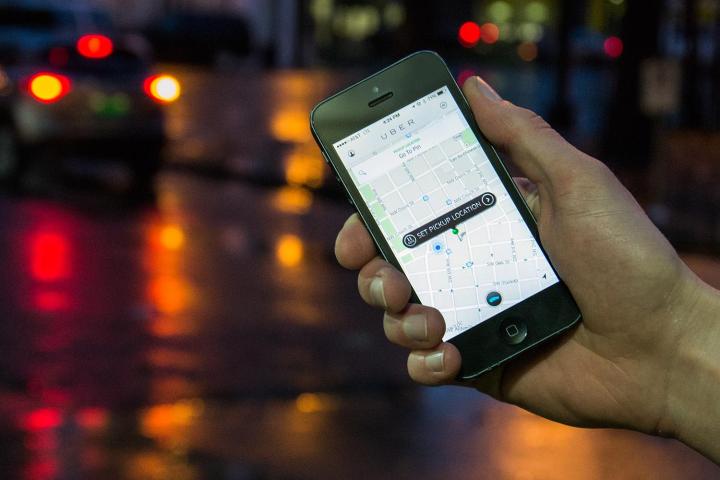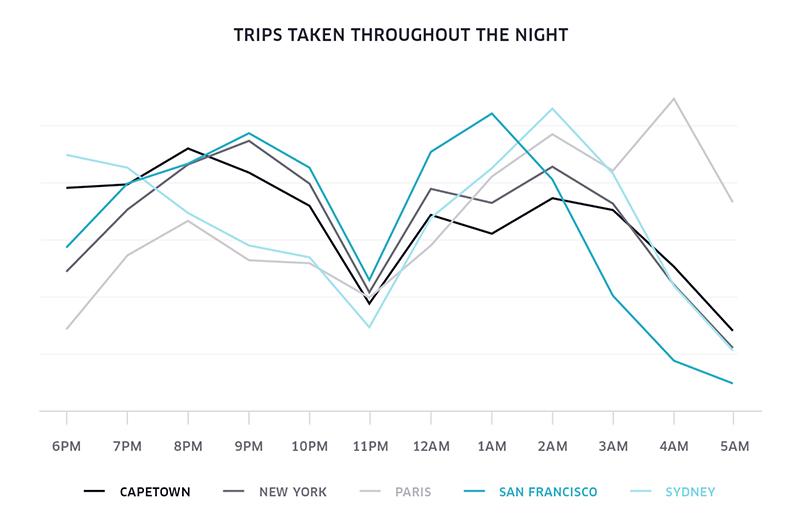

In the latter category San Francisco peaked the earliest and fell away the fastest, with most post-midnight journeys happening around 1am. In Paris, on the other hand, journeys spiked as late as 4am and there were still substantial numbers of people on the move an hour later. Cape Town, New York and Sydney were all somewhere in the middle.
During the peak hours of New Year’s Eve, 58 trips per second were being made, said Uber; the company also revealed that around 100,000 people were sat in an Uber car as the clock struck midnight. During 12.01am and 12.30am demand increased on the Uber network by a whopping 180 percent. The biggest dip in journeys happened at 11pm and was consistent across all of the cities mentioned in Uber’s post.
It was by no means an easy 2014 for Uber, as it battled increased competition, sexual harassment cases, several lawsuits, cabbie protests and allegations of dodgy business dealings. Executives behind the platform will be hoping that it enjoys a smoother ride during 2015 as it looks to expand operations further across the United States and the rest of the world.
Uber isn’t alone in digging into the New Year’s Eve data either: Jawbone has also posted up its findings about how late users in particular cities stayed up. Moscow earned top spot with an average bedtime of 3.43am, while Paris came in tenth with a time of 2.53am. In the U.S., the city that managed to keep partying the longest was Astoria (Queens), NY — the average bedtime logged there was a respectable 2.38am. Around 30 percent of Jawbone users in the States are asleep by midnight on New Year’s Eve, the company says.


